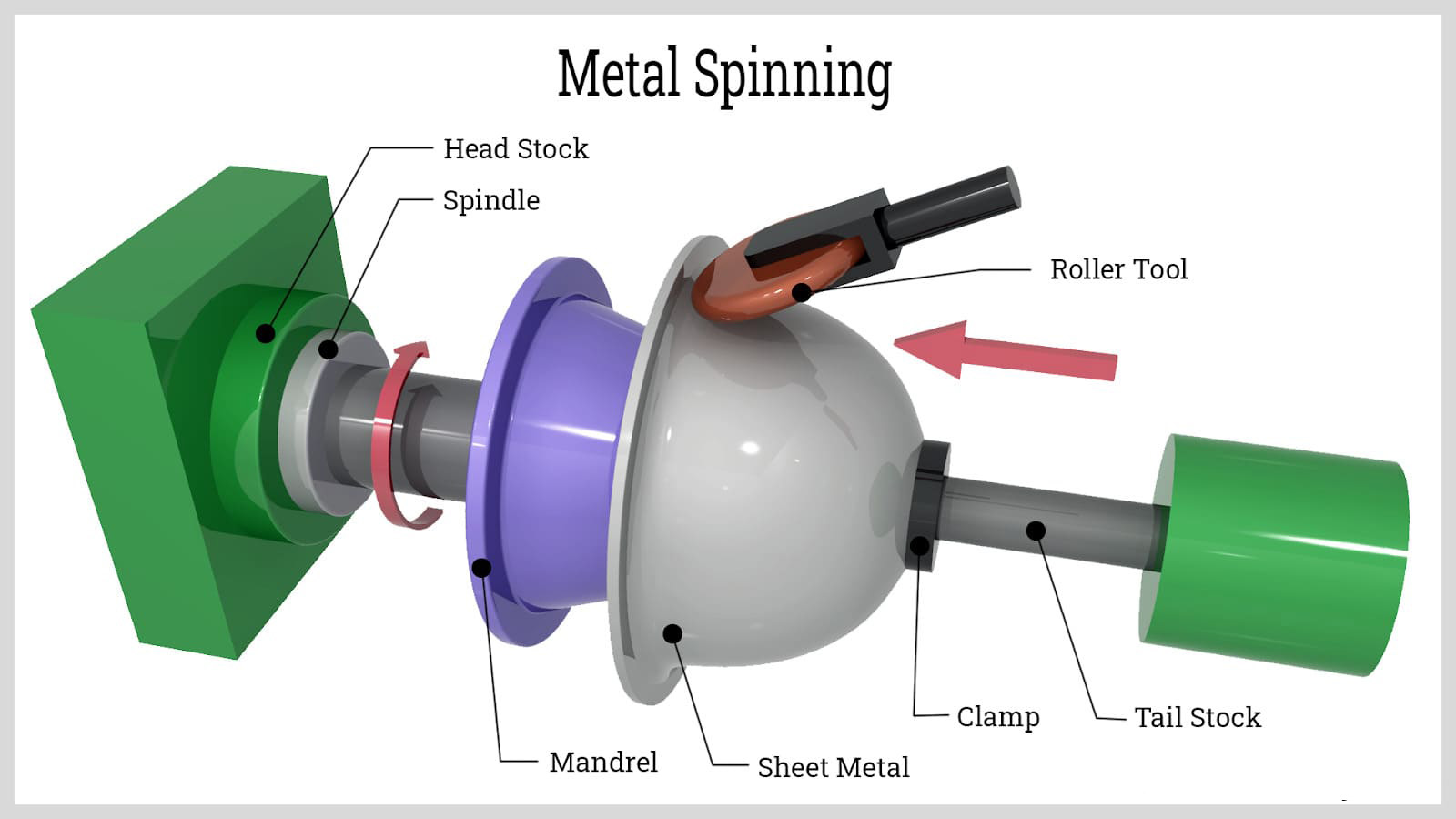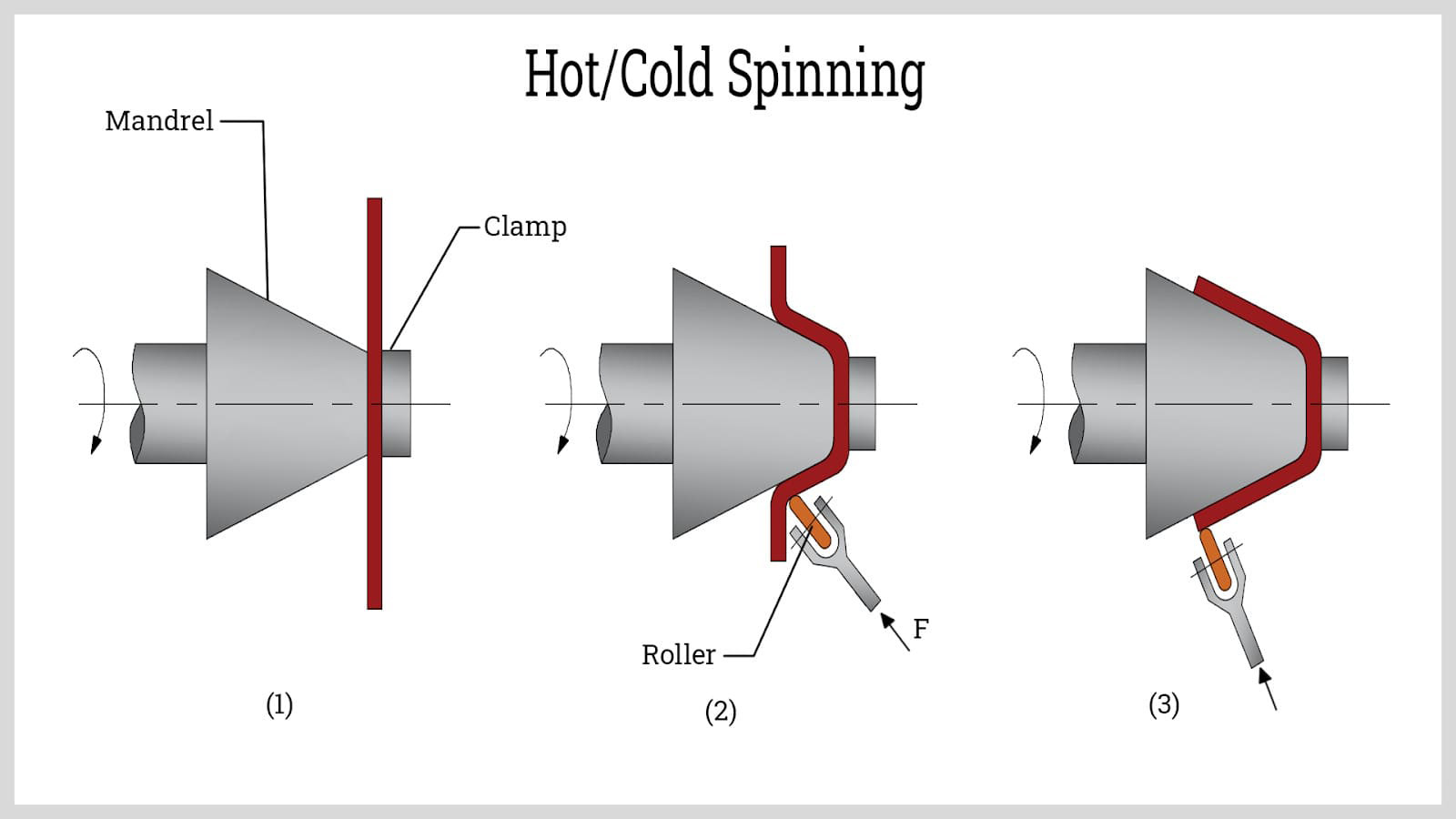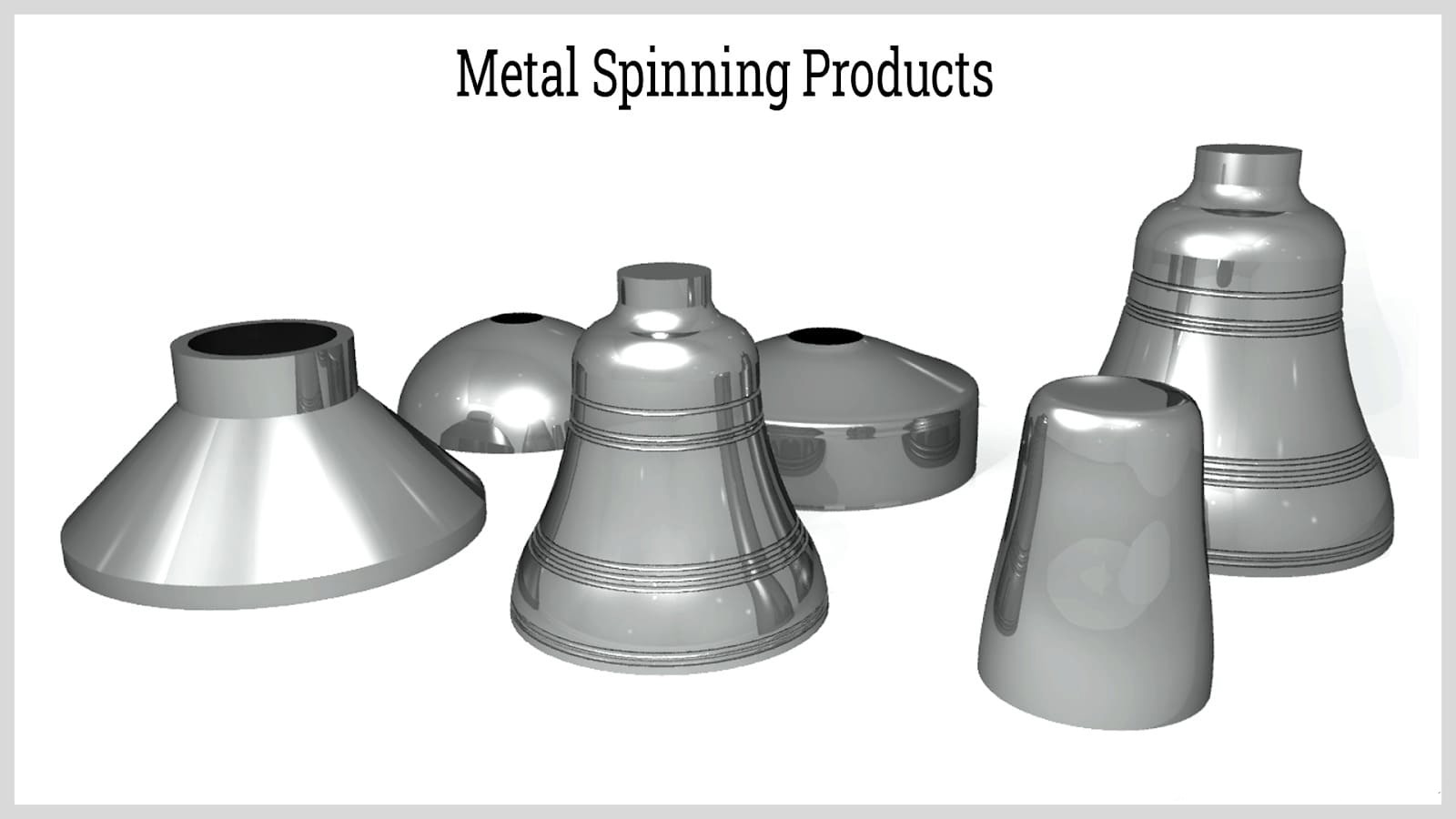You are here: > Home > Products > Metal Spare Parts > Deep Drawing Parts
Deep Drawing Parts
Metal spinning products supplier
XCDP-10
Metal spinning products supplierMaterial:Steel
Finish:Zinc Plated
Material available | Steel,Aluminum,Copper,Stainless steel and other sheet metal. |
Surface finish | Zinc plated,Chrome plated,Brass Plated,Powder Coating,Polish,Brush,Electrophoresis |
Main Manufacture process | Trimming,Deep drawing stamping,Deburring,Assemble |
Need a custom deep drawn part? Let our deep drawing specialist review your project and recommend the optimal custom solution. Complete and submit the form to the right to get started | |
Advantages of the Metal Spinning Process
Metal spinning, also known as spin forming or metal turning, is a manufacturing process in which a flat metal disc (known as a blank) is shaped into a hollow, symmetrical form. This is done by rotating the blank at high speeds on a lathe and pressing it against a mandrel with a tool. This technique is widely used in industries ranging from aerospace to kitchenware, as it offers unique benefits over other metal forming processes. Here are the main advantages of metal spinning:

1. Cost Efficiency
One of the most significant advantages of metal spinning is its cost efficiency, especially for small to medium production runs. Unlike stamping or deep drawing, which often require expensive tooling and molds, metal spinning uses a simple mandrel, which can be made inexpensively. This keeps the initial setup costs lower, making metal spinning an affordable option for prototypes, custom designs, or low-volume production.
For example, if a company needs to produce only a few hundred parts, they can avoid the high setup costs of tooling used in other processes. This efficiency makes metal spinning attractive for smaller companies or specialized industries where parts may not be produced in very large quantities.
2. Versatility in Design
Metal spinning is highly versatile, allowing for a wide range of shapes and sizes. The process is capable of producing simple shapes, such as cones and cylinders, as well as more complex, contoured profiles. This versatility allows designers to experiment with different forms without being restricted by the high costs associated with traditional molding or casting.
Because metal spinning can handle different metals, such as aluminum, copper, brass, and steel, it offers more options to manufacturers. This means that the process is suitable for many industries, including aerospace, automotive, and decorative arts, where varied materials and shapes may be needed for different applications.
3. High Precision and Control
The metal spinning process offers a high degree of precision. Skilled operators or modern CNC spinning machines can produce parts with tight tolerances and smooth finishes. Since the metal is shaped gradually through pressure, rather than by cutting or welding, the final product is typically free of seams and weld marks, resulting in a cleaner appearance and better performance for certain applications.
CNC (Computer Numerical Control) spinning machines allow for repeatable precision, making the process even more accurate and ideal for components that require consistent quality, such as parts used in aerospace or medical equipment.
4. Enhanced Material Properties
Metal spinning can improve the mechanical properties of the material being shaped. When the metal is spun, it undergoes cold working, which increases its tensile strength and hardness. This added strength can make the spun parts more durable and resistant to impact or wear.
For example, aluminum spun into a shape may have enhanced strength, making it suitable for high-stress applications. The cold working effect from spinning often means that parts do not require additional heat treatment, saving time and energy in the production process.
![]()

5. Reduced Material Waste
Compared to other metal forming processes, metal spinning generates minimal waste. In methods like stamping or milling, a significant amount of material is cut away, leading to scrap that may need to be recycled. In metal spinning, however, the blank is formed directly into the final shape, with little to no material removed in the process.
This advantage not only reduces material costs but also aligns with environmental sustainability efforts. With less waste generated, metal spinning can be a more eco-friendly option, especially important for industries aiming to reduce their environmental impact.
6. Shorter Lead Times
Since metal spinning requires minimal tooling, the lead time for production can be shorter compared to other processes that need complex dies or molds. This can be highly advantageous for companies needing to bring a product to market quickly or produce custom parts on demand.
For example, if a design change is needed mid-production, it’s relatively easy to implement with metal spinning by changing the mandrel or the spinning tool, rather than retooling an entire die set. This flexibility can save companies both time and money in dynamic manufacturing environments.
7. Suitability for Both Prototypes and Large Runs
Metal spinning is an excellent choice for both prototype creation and larger production runs. For prototypes, the low cost and flexibility of the tooling make it easy to test and refine designs without high upfront costs. Once a design is finalized, the process can be scaled up to meet higher production demands, especially with the use of CNC spinning machines.
In industries such as automotive and aerospace, where prototypes and testing are essential, metal spinning provides a reliable way to test concepts and move quickly to production once a design is approved.
8. Smooth Surface Finishes
Metal spinning produces parts with a smooth and polished surface finish, which often requires little to no additional finishing. This smoothness is achieved naturally as the metal is gradually formed over the mandrel, reducing the need for further polishing or coating processes. This not only saves time but also reduces costs associated with finishing work, making the final product ready for use immediately after spinning.
Metal spinning offers numerous advantages for manufacturers looking for a versatile, cost-effective, and efficient metal forming process. Its ability to produce high-quality, seamless parts with minimal waste and shorter lead times makes it a highly valued technique across industries. By enhancing material properties and allowing for flexible designs, metal spinning is especially useful for industries that require durable, lightweight, and custom-shaped components. Whether for prototype development or large-scale production, metal spinning remains a highly advantageous option for a wide range of metalworking applications.


